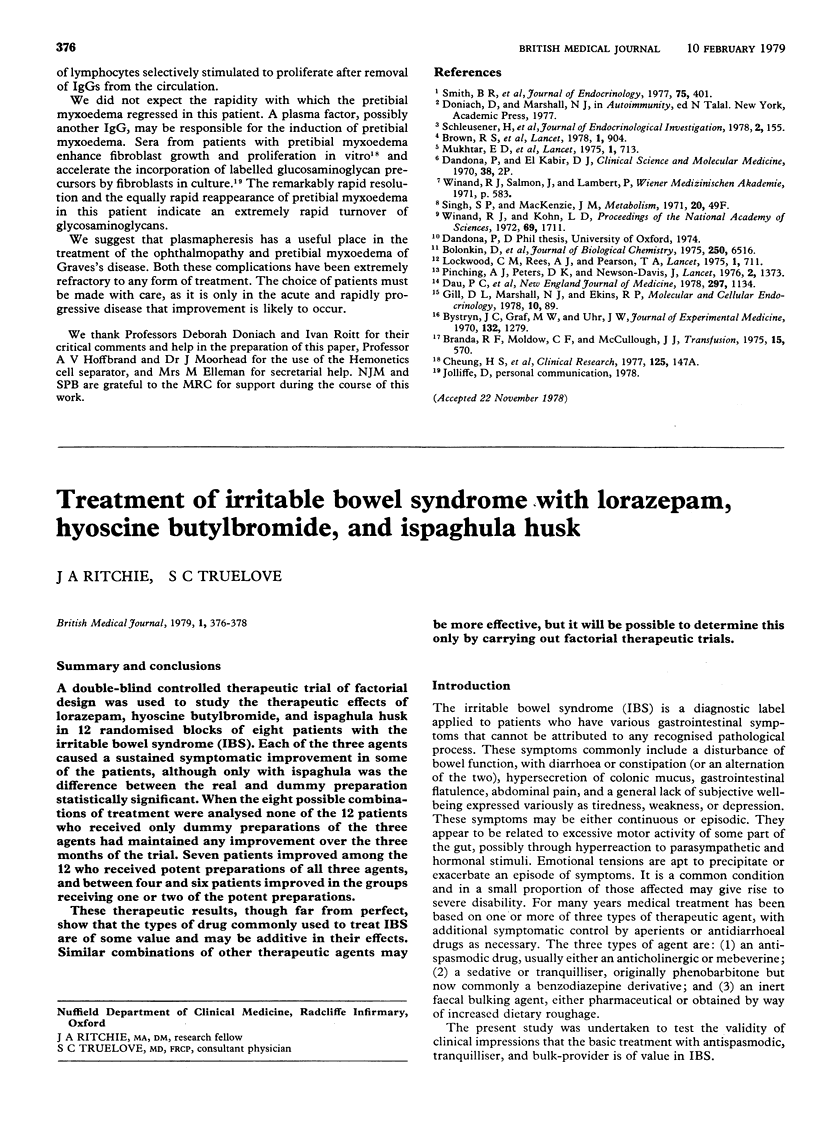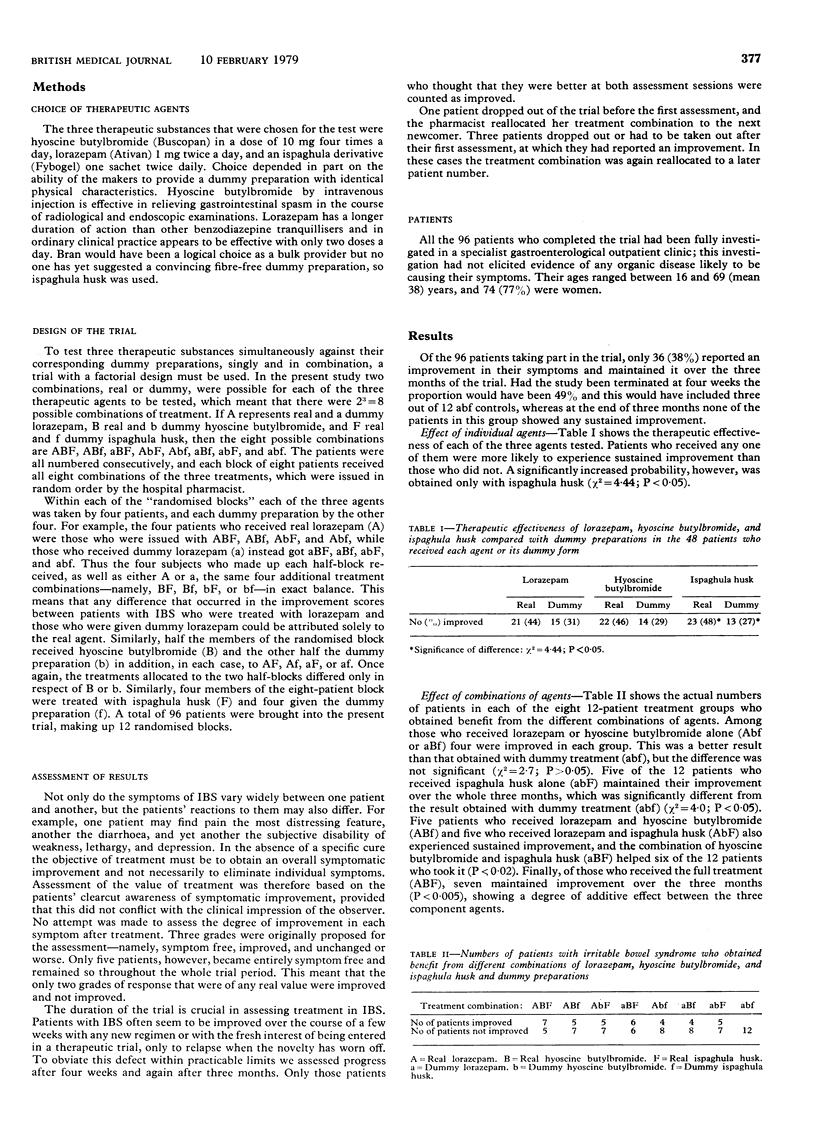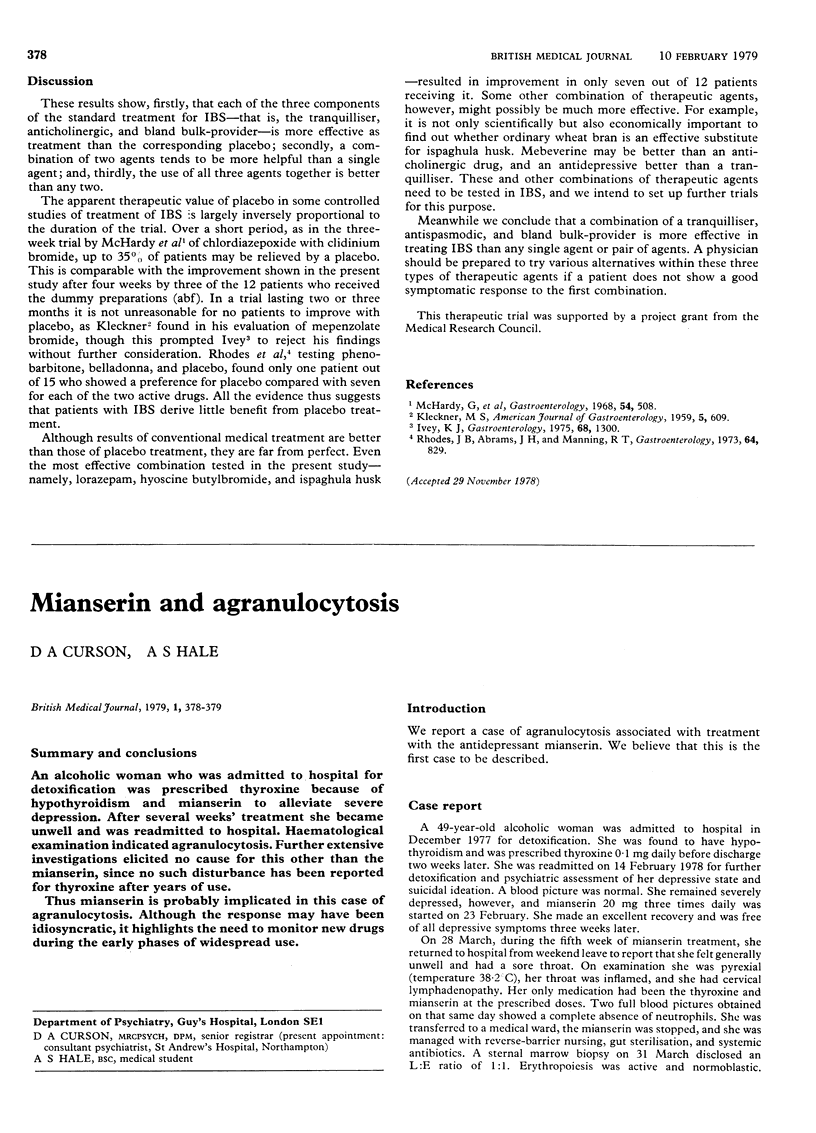Abstract
A double-blind controlled therapeutic trial of factorial design was used to study the therapeutic effects of lorazepam, hyoscine butylbromide, and ispaghula husk in 12 randomised blocks of eight patients with the irritable bowel syndrome (IBS). Each of the three agents caused a sustained symptomatic improvement in some of the patients, although only with ispaghula was the difference between the real and dummy preparation statistically significant. When the eight possible combinations of treatment were analysed none of the 12 patients who received only dummy preparations of the three agents had maintained any improvement over the three months of the trial. Seven patients improved among the 12 who received potent preparations of all three agents, and between four and six patients improved in the groups receiving one or two of the potent preparations. These therapeutic results, though far from perfect, show that the types of drug commonly used to treat IBS are of some value and may be additive in their effects. Similar combinations of other therapeutic agents may be more effective, but it will be possible to determine this only by carrying out factorial therapeutic trials.
Full text
PDF


Selected References
These references are in PubMed. This may not be the complete list of references from this article.
- Ivey K. J. Are anticholinergics of use in the irritable colon syndrome? Gastroenterology. 1975 May;68(5 Pt 1):1300–1307. [PubMed] [Google Scholar]
- KLECKNER M. S., Jr Clinical evaluation of a 3-hydroxypiperidine (cantil) in the therapy of intestinal disturbances. A double-blind, controlled study. Am J Gastroenterol. 1959 Nov;32:609–619. [PubMed] [Google Scholar]


